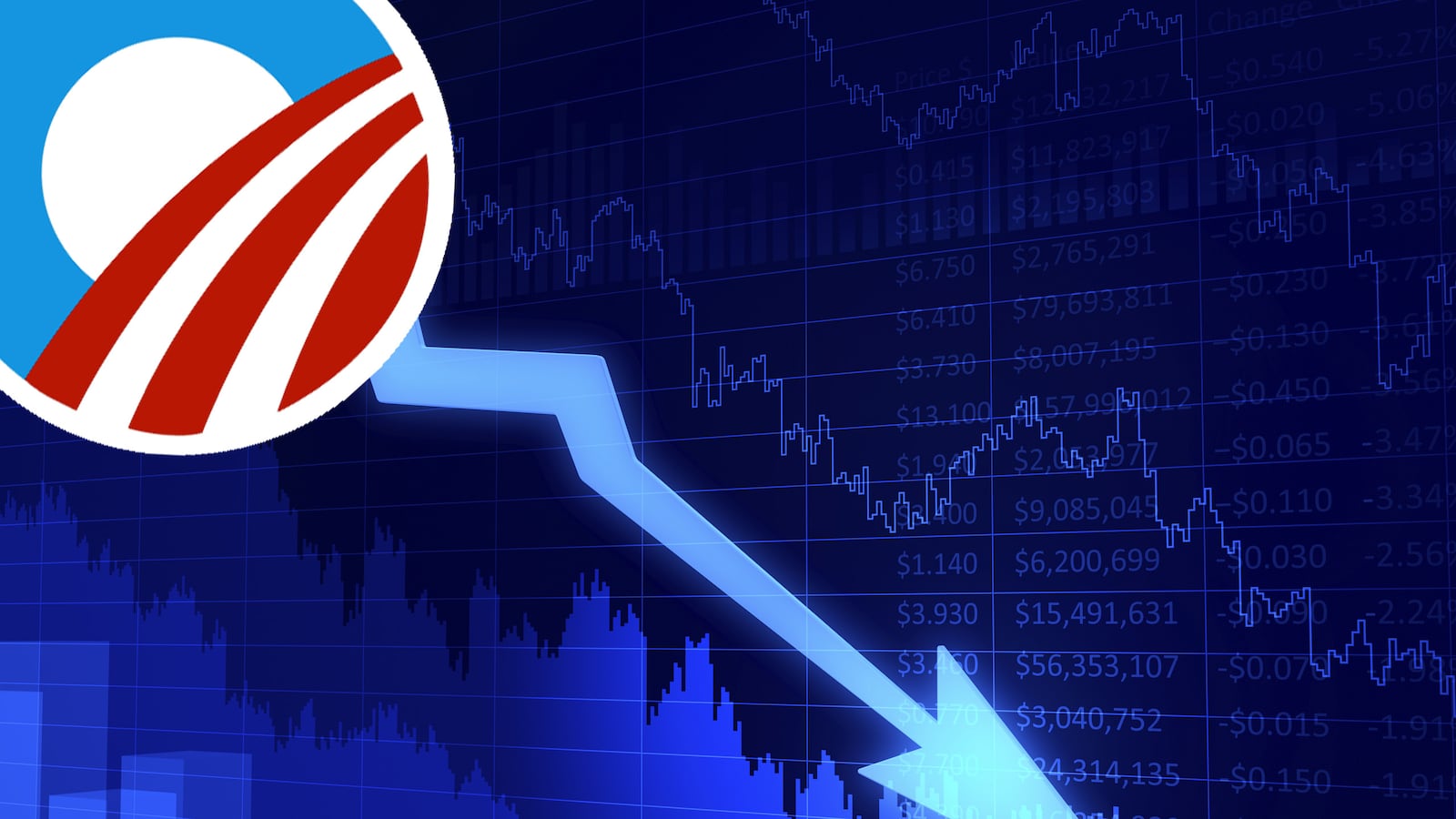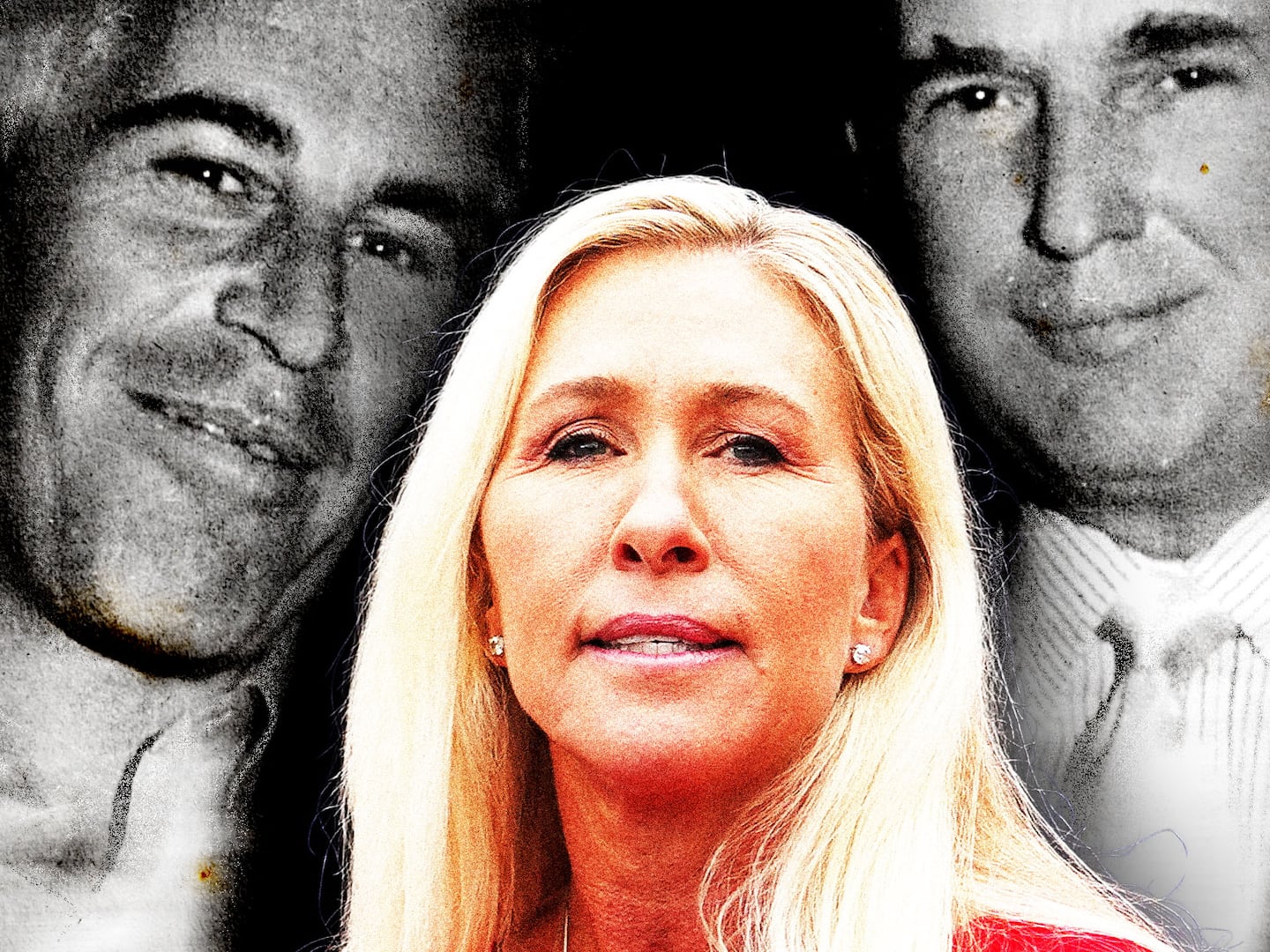Obamacare did help crash the economy. Only not in the way its critics thought it would.
The Commerce Department on Wednesday revised the growth figures for the first quarter of 2014, and concluded that the economy shrunk at a 2.9 percent annual rate. This comes a month after the government slashed its initial estimate from an annual growth rate of 0.1 percent to a decline of 1.0 percent. At the time, I called it a hiccup rather than a heart attack.
That was some hiccup.
At first blush, the substantial downward revision is something of a mystery. The U.S. economy didn’t suffer from any major shocks. There was no threat of default, government shutdown, huge cuts in government spending, or sharp tax increases. No major financial institution failed.
Throughout the winter and spring, companies warned that the brutal weather—the disruptive snowstorms, the arctic cold—would have a dampening effect on economic activity. And the weather definitely played a role in stalling the main engine of the U.S. economy—the American consumer.
The BEA breaks down sectors by their contribution to GDP. Personal consumption expenditures—people buying stuff—grew at a meager one percent rate in the first quarter. And that had a significant impact on businesses. When companies add to inventories—i.e., they sell stuff and then order more stuff in anticipation of higher sales down the rate—at a strong rate, it adds to GDP. When they don’t restock depleted inventories, it detracts from growth. And in the first quarter, it turns out that companies didn’t restock aggressively—either because traffic was slow due to the weather, or because they had ordered too much stuff the last time. Private inventories fell by a stunning 70 percent in the first quarter of 2014 from the fourth quarter of 2013. Inventories alone knocked down the rate of growth by 1.7 percent.
But the biggest surprise came in health care. Declining health-care spending accounted for a big chunk of the decline. In the quarter, health-care spending actually fell $6.4 billion from the fourth quarter of 2013. That’s not much of a decline. But it represented a very substantial revision from what the government had originally reported. A month ago, the BEA thought health-care spending rose at a 9.1 percent annual rate in the first quarter. After all, health-care spending almost always rises—and quite rapidly. But today, upon further reflection and numbers-crunching, it concluded that health-care spending actually fell at a 1.4 percent annual rate. So instead of adding 1.01 percentage points to the GDP growth rate, as the government thought last month, health care wound up sandbagging growth by 0.16 percent. That differential accounted for about 60 percent of the downward revision.
Why did this happen? It could be that people were hording medicines and avoiding going to the doctor during the cold weather. Or it could be that many newly insured people delayed going to see the doctor, buying medicine, or having procedures done in January, February ,or March until their health-care premiums were fully processed by the state and federal exchanges in April. (Remember, April 1 was the deadline for signups under the Affordable Care Act). It could be that doctors are rationing health care—refusing to schedule appointments. Or it could be that many people are actually paying less for health care because they have insurance—i.e., seeing doctors with a $25 co-pay instead of going to the emergency room.
Clearly, the implementation of Obamacare is disrupting and disturbing the way that health-care services are being priced and consumed. In the first quarter, that led to lower spending—either through lower utilization, or lower prices, or some combination thereof.
So, are we in a recession? Popular definition holds that it is two consecutive quarters of negative growth. The reality is that it’s kind of like pornography—the National Bureau of Economic Research knows one when it sees one. It decides if a peak has been reached and there’s a persistent decline.
But the reality is that we don’t seem to be there. In fact, much of the data—especially the data related to consumers—shows that the spring is more than making up for the slack winter. New-car sales in May were 1.61 million, the highest rate in years. New homes sales, reported Monday, soared 18.6 percent from April, and were at the highest annual rate since 2008. Consumer confidence bumped up in May to its highest level since January 2008.
The two indicators you’d want to watch the most—if you’re worried about a recession are jobs and consumer spending. It’s hard to have economic growth without both moving in the same direction, and hard to have a recession if both are in negative territory. Retail sales so far this year are up 3.4 percent from 2013.
Meanwhile, the jobs front is actually looking pretty good. This was the worst quarterly economic performance since the first quarter of 2009. In that quarter, after having been in recession for a year and losing 3.6 million jobs, the free-falling economy shed 2.3 million positions. By contrast, in the first quarter of 2014, after the economy had added jobs for 46 straight months, it added another 569,000.
So, yeah, it was a very big hiccup—one sufficiently large to jolt the heart from its regular beat. But it seems to be back on pace. Fortunately, the American economy has some health insurance.






